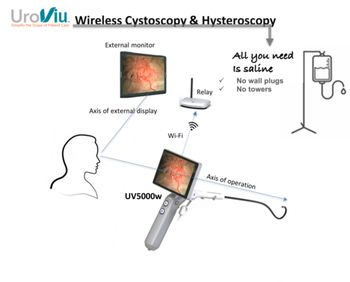
The road to real value-based care
The time has come for primary care to drive the innovative change in health care delivery and financing.
Summary
Value-based care (VBC) models have existed for fifteen years but have not made meaningful changes to health care delivery or spending in the United States. The COVID-19 pandemic and ensuing financial strain on hospital systems have made it evident that more dramatic and rapid change is required. The time has come for primary care to drive the innovative change in health care delivery and financing. Key drivers of change will be forward-thinking independent practice associations, medical groups, and health systems. These entities must determine how to work together to embrace ambulatory-first contracting strategies, and to expand delivery of care outside the walls of traditional acute care hospitals, while enhancing the access to critical care which only hospitals can provide.
Introduction
VBC has been around for fifteen years. First in the form of Alternative Payment Models, then with modest incremental momentum promoted by Center for Medicare & Medicaid Services Innovation Center (CMMI) and its Accountable Care Organizations (ACO) programs. Yet, the fee-for-service (FFS) payment platform remains the engine driving most of the $4.4 trillion U.S. health care industry. Neither health care financing nor health care delivery has changed for the better in the past decade. The U.S. is mired in a ‘system’ of worsening access, uncontrolled costs, clinician burnout and variable quality outcomes. The ‘system’ has failed. But change is coming.
CMS has announced that VBC will drive all payments beginning in 2030.1 Since all commercial payers piggyback on CMS payment policies, health care providers, hospitals, and physicians must adapt. To achieve the quintuple aim of population health, the FFS chassis will finally be turned upside down.2 In its place, VBC will evolve into an optimal form in which providers assume global risk contracts whereby they assume full responsibility for financial and clinical outcomes.
For fifty years, care delivery has revolved around two organizational models: hospital systems and community-based physicians. These models are now poised for unprecedented changes. With the doctor-patient relationship at its core, physicians will reassert their responsibility for the longitudinal care of patients. At the same time, hospitals will focus on what they do best — servicing episodic and transitional care needs. Both physicians and hospitals will be rewarded for providing high-quality, high-value care. Who will drive these changes, and how?
We address the issues directly below and argue that Primary Care Physicians (PCPs), PCP groups, and the Independent Practice Associations (IPAs) and the Risk-Bearing Entities (RBEs) by which they contract with payers and the government will provide real VBC solutions. Progressive health systems, mindful of the need to move toward ambulatory strategies with employed PCPs, are beginning to enter the primary care transformation space, taking on primary care capitation contracts and full-risk models.
Accelerating market trends
Hospital systems have increasingly acquired community-based physician practices. More recent acquisitions have been by insurers (such as United/Optum), retailers (CVS, Walgreens), or private equity groups. This trend accelerated in the past decade as under-capitalized physician practices faced growing administrative burdens created by the required adoption of electronic health record (EHRs) systems. This technology was designed to facilitate the coding and billing requirements of FFS care and has resulted in immense frustration for physicians, resulting in physician burnout and an unstable physician workforce. Relegated to screens for data entry, physicians have literally taken their eyes off their patients.
While employment with large hospital-led systems has provided income security, productivity targets and internal referral pressures have offset the benefits, particularly in systems whose focus continues to be on high-cost specialty care within hospital walls. In health care systems where VBC is embraced with full risk or primary care capitation contracts, the employed group leverages transformation strategies to allow PCPs to practice with team-based support, high-quality referral networks, and technology support, including remote patient monitoring, acute care at home and improved patient access. In these groups, compensation becomes aligned with quality and performance. Without these transformations, and freedom from the FFS treadmill, burnout will accelerate.
COVID-19 made things worse, but provoked unforeseen and beneficial consequences. Telemedicine and remote monitoring demonstrated the opportunities to escape many EHR requirements. Patient-doctor relationships were tightened as patients relied on their doctor’s advice instead of information from impersonal organizations such as hospitals, state departments of health, and the CDC. The pandemic exposed the fragility of hospital service and financial models. In 2023, the financial performance of hospital-based systems has continued to decline.3 Since October 1st, several major hospital systems, have seen financial ratings downgrades.3 This problem is not going away.
Another trend over the past decade is the performance of Medicare Shared Savings Programs (MSSP) and ACOs. Physician-led ACOs that are comprised solely of physician practices have outperformed hospital-led ACOs.4 This provides an important preview for the upcoming transformation. Researchers have generally concluded that after three years of the MSSP, participation in shared-savings contracts by physician groups was associated with savings for Medicare that grows over time.
The American Hospital Association (AHA) found that doctor led ACOs had performed better than hospitals in the Medicare Shared Savings Program, primarily by reducing unnecessary hospitalizations.5 Similarly, the CMS GPDC/DCE (Global and Professional Direct Contracting) program saw physician-led entities such as Iora, Oak, Bloom Health, and others driving the most significant savings, with entities led by hospital systems showing mixed results.6 An exception is Intermountain, which is the only major system that has more than half of its revenues tied to risk contracting and VBC. Intermountain's commitment to an ambulatory-first system is generating serious returns.7
Net savings is the opposite of net income. Without profitability, there is no available capital for investment, so medical care systems cannot evolve and flourish. For example, investment is necessary to retrain and redeploy hospital personnel into the ambulatory sector, away from acute care to acute care at home instead. In some cases, hospital-centric health care systems are forced to make difficult decisions that ultimately under-resource their ambulatory platform and outpatient provider workforce to meet the operational financial needs of their hospital chassis. The era of hospital consolidation and physician practice acquisition is ending. Negative net incomes for hospitals are now driving the divestiture of some physician assets. Consequently, community-based Independent Practice Associations (IPAs), which have quietly existed for forty years, are beginning to grow again.8
Why provider organization models are changing
As noted, hospital-physician consolidation was driven in large part by the capital intensity of the shift toward expensive EHRs, state and federal reporting requirements. In recent decades, hospitals have had many reasons to consolidate vertically. Employing physicians allowed hospitals to reduce leakage, that is, reduce the migration of patients to competing hospitals. Hospital-led systems saw primary care as a loss leader, necessary to feed the flow of profitable services such as labs, pharmacy, imaging, and surgery. Currently, access to primary care in large hospital systems is poor. Major institutions such as Mass General Brigham and UCSF have made recent announcements limiting new patients' access to their primary care practices. These access challenges are felt nationally and are driving burnout, retirement of PCPs, and low uptake of primary care for trainees. Solutions to this access crisis will need to be multi-pronged, but crucial to success is the reduction administrative burden. Restoration of PCP satisfaction also requires robust team-based care and immediate improvement in compensation models to align with VBC goals.
Why are Independent Practice Associations growing? Because PCPs are uniquely positioned to quarterback patient journeys. Real VBC, in the form of risk contracts, requires PCPs to focus on improving patient access and communication. That means a dramatic increase in prepaid ‘concierge-like’ telemedical engagement, more thoughtful ordering of diagnostic testing, smarter referrals, and tighter engagement with the highest quality and lower cost specialty care physicians (SCPs). Two key features of well-run IPAs are the true financial alignment of SCPs with PCPs and the robust sharing of patient information. Moving to global risk contracting allows PCP groups, IPAs and RBEs to re-establish the practice of curbside consulting, where informal communications optimize the appropriateness and speed of referral processes. Both PCPs and SCPs benefit from the savings derived from avoidable ER visits, reduced hospital admissions, and elimination of unnecessary, low-value procedures.
Another critical feature that distinguishes doctor-led organization models from those of hospitals is the capital intensity of the latter. Capital intensity in the form of expensive facilities and technology necessitates a managerial focus on maximizing throughput. This is at odds with VBC. As noted earlier, this inability to toggle between FFS and VBC is evidenced by mixed or minimal success in hospital system led ACOs.
The advent of telehealth and remote monitoring technologies is paving the way for enhanced clinical services in the home setting. Aside from convenience, patients are spared the risk of exposure to hospital-acquired conditions, receiving care at home for appropriate conditions has been demonstrated to deliver better outcomes. ACOs that have utilized acute care at home programs have demonstrated improved patient outcomes, reduced downstream utilization of skilled nursing facilities (SNF), and improved readmission rates in high-risk patient populations10. A three-year study of the ACO-based Integra at Home model in the Rhode Island-based Care New England health system (CNE) has demonstrated reductions in ER and inpatient utilization, along with improved documentation of goals of care, improved patient and family satisfaction, and increased time at home10. Integra’s program began to offer patients, care management staff, and PCP options to treat in place rather than in the ER or hospital.
The CMS Acute Hospital Care at Home waiver has had dramatic uptake around the US. In many hospitals interest has been driven by a need to increase capacity to manage the demand issues present since the pandemic. In some health care systems, particularly those with robust RBEs, and engaged PCP groups, in-home acute care has been embraced as a model that improves all aspects of the quadruple aim. Kent Hospital in Warwick RI, part of the CNE system and a member of the Integra ACO, obtained the CMS waiver in November of 2021 and inaugurated Kent Hospital at Home in January of 2022. Already surpassing almost 400 discharges, Kent Hospital at Home has demonstrated high patient satisfaction (99% likelihood to recommend scores), markedly reduced readmission rates (3-6% per quarter average), low escalation rates, and almost non-existent SNF use since the program began. CNE has committed to this acute care at home approach because of a commitment to an ambulatory-first strategy and a recognition that care-at-home required direct connection to primary care. PCP satisfaction and hospital at home team member satisfaction is also dramatically higher. While acute care at home will be here to stay, hospitals will remain a critical part of the landscape.9
Physician alignment with the goals of population-based VBC will be essential for the next phase of risk contracting to succeed. This model can be made possible through physician-led ACOs and organized physician groups and IPAs, but also via innovative employed physician groups inside health systems that recognize a need to move ambulatory care to the forefront with the corresponding alignment of PCP compensation, incentives, and contracts. Hospitals will continue to play a critical role in developing high-value bundled programs for patients’ episodic, emergency, and tertiary/quaternary care needs.
Right about now, astute readers will ask, "This all sounds good, but how will this transformation be financed?" We believe that private capital is the answer, and that’s not the same as big corporate capital. We don’t think the aforementioned corporate top-down approach (CVS, United Health Care / Optum, Amazon, Walmart) will successfully scale because great health care delivery is too personal and too local.
Conclusion
The era of hospital domination of the health care system is ending, as is hospitals' acquisition of physician practices. Patients seek preferential access to doctors, not hospitals. No one argues that patients have stronger and longer relationships with their doctors than with hospitals.
The strength of this doctor-patient relationship is foundational to the future of VBC.
The patient:doctor experience in global risk IPA, RBE, ACO environments is enriched by financial incentives that promote higher PCP touchpoints. These of involved ‘concierge-like’ engagement with patients, often via telemedicine (voice, text, video), unencumbered by the need to code and bill for each transaction.
In PCP groups and IPA-managed global risk contracts, physicians are eager to coordinate longitudinal medical care for their patients and optimize resource utilization. ‘Value-based care’ is another way of saying it is time to focus on prevention, pre-emptive care, and managing patients with chronic conditions throughout their health care journey. Primary care physicians and IPAs, working closely with hospitals as vendors, are well-positioned to accomplish these goals.
Regrettably, insurers, hospitals, and the government have failed to manage the health care system. Physicians and their patients can no longer tolerate broken relationships. Primary care physicians and Independent Practice Associations, engaged in risk contracts that reward value over volume, provide fast-growing opportunities for physicians to aggregate with their peers and drive, simultaneously, improvements in the financing and delivery of health care services for all.
About the authors
Dr. Kryder is CEO of Boston-based
References:
- Rawal P, Quinton J, Hughes D, Fowler L.The CMS Innovation Center’s Strategy to Support High-quality Primary Care.June 9, 2023. Accessed at:
https://www.cms.gov/blog/cms-innovation-centers-strategy-support-high-quality-primary-care#:~:text=CMS%20has%20set%20a%20goal,mechanism%20for%20achieving%20this%20goal . - Itchhaporia D. The Evolution of the Quintuple Aim: Health Equity, Health Outcomes, and the Economy. J Am Coll Cardiol. 2021, Nov 30; 78(22): 2262-2264.
- Condon, A. Becker’s Hospital Review. 46 Hospitals, health systems hit with downgrades. November 3, 2023. Accessed:
https://www.beckershospitalreview.com/finance/23-hospitals-health-systems-hit-with-ratings-downgrades-this-year.html - Lagasse, J. Physician-led accountable care organizations outperform hospital-led counterparts. Healthcare Finance News. October 16, 2019: Accessed:
https://www.healthcarefinancenews.com/news/physician-led-accountable-care-organizations-outperform-hospital-led-counterparts#:~:text=The%20analysis%20found%20that%20the,beneficiary%20than%20hospital%2Dled%20ACOs . - Stempniak, M. What Physician-led ACOs Can Teach Hospitals. American Hospital Association. Accessed at:
https://www.aha.org/hhnmag/3887-what-physician-led-acos-can-teach-hospitals - Pifer, R. Defunct direct contracting model saved Medicare $372 million last year. Healthcare Dive. October 24, 2023. Accessed at:
https://www.healthcaredive.com/news/medicare-direct-contracting-savings-2022/697566/ - Intermountain case study.
https://impact.economist.com/projects/towards-higher-value-care/documents/Intermountain_Case_Study_(US).pdf - Rajaee L. The movement around independent physician associations. Elation Health. May 8, 2023. Accessed at:
https://www.elationhealth.com/resources/blogs/the-movement-around-independent-physician-associations - Fulton Tuya A, Vognar L, Stuck AR, McBride C, Scott R, Crowley C. Integra at Home: A flexible continuum of in-home medical care for older adults with complex needs. J. Amer Geri Soc. 2023: 1-7. Early online access November 9, 2023.
Newsletter
Stay informed and empowered with Medical Economics enewsletter, delivering expert insights, financial strategies, practice management tips and technology trends — tailored for today’s physicians.



















